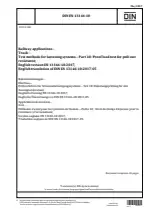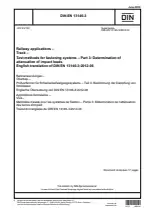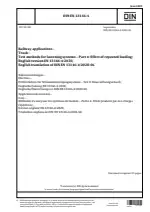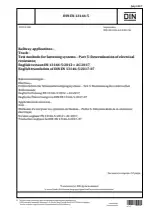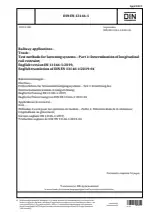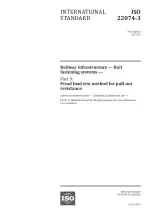Railway Applications - Track - Test Methods for Fastening Systems - Part 10: Proof Load Test for Pull-Out Resistance
Also Known As:
The DIN EN 13146-10 standard provides guidelines for conducting a laboratory test to determine the ability of a rail fastening system to withstand a specified force without being pulled out from the sleeper or any other supporting element. This test is known as a proof load test.
The purpose of this standard is to ensure the reliability and durability of rail fastening systems used in railway applications. It aims to determine whether the force required to pull the anchorage of the fastening assembly out of the sleeper meets the prescribed value. By conducting this test, railway operators and manufacturers can assess the pull-out resistance capability of the fastening system.
The standard specifies the test procedure to be followed in the laboratory, which includes the equipment, preparation of test specimens, and the application of the prescribed pull-out force. It provides detailed instructions on how to measure and record the force applied during the test.
Compliance with this standard helps ensure the safe and efficient operation of railway tracks. It is an essential tool for railway track engineers, maintenance personnel, and manufacturers involved in the design, production, and installation of rail fastening systems.
| Descriptors | Capacitive loads, Displacements, Fasteners, Fixings, Laboratory testing, Loading, Loading tests, Permanent ways, Pull-out forces, Rail fastening systems, Railway applications, Railway construction, Railway installations, Railways, Shape, Shear stress, Sleepers, Superstructure, Tensile loading, Testing, Tracks (materials handling equipment), Travel ways, Stress, Pavements (roads), Ties, Sheets, Roadways |
| ICS Codes | 93.100 - Construction of railways |
| Language(s) | English |
| File Size | 880.6 KB |

